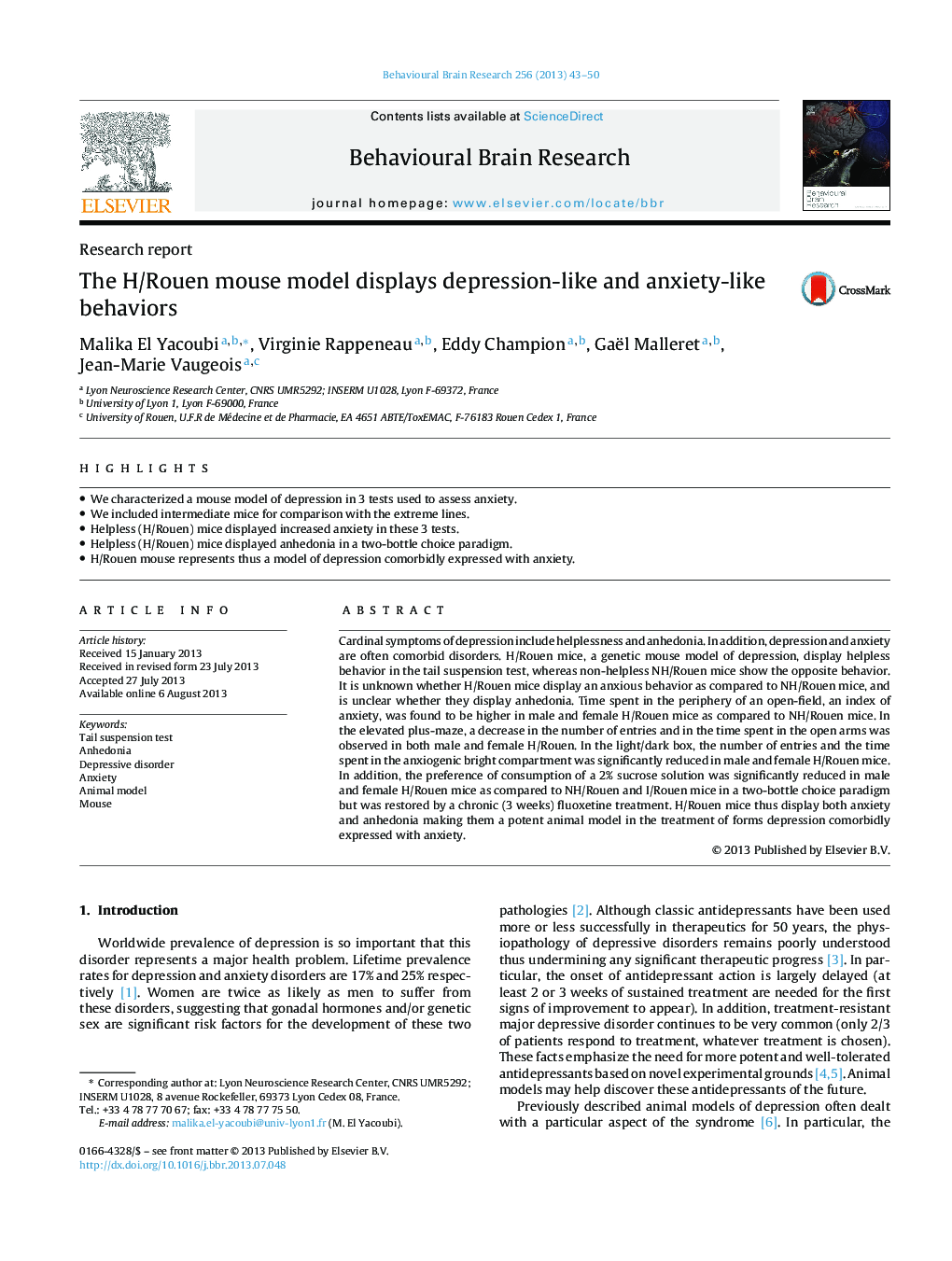| Article ID | Journal | Published Year | Pages | File Type |
|---|---|---|---|---|
| 6258740 | Behavioural Brain Research | 2013 | 8 Pages |
â¢We characterized a mouse model of depression in 3 tests used to assess anxiety.â¢We included intermediate mice for comparison with the extreme lines.â¢Helpless (H/Rouen) mice displayed increased anxiety in these 3 tests.â¢Helpless (H/Rouen) mice displayed anhedonia in a two-bottle choice paradigm.â¢H/Rouen mouse represents thus a model of depression comorbidly expressed with anxiety.
Cardinal symptoms of depression include helplessness and anhedonia. In addition, depression and anxiety are often comorbid disorders. H/Rouen mice, a genetic mouse model of depression, display helpless behavior in the tail suspension test, whereas non-helpless NH/Rouen mice show the opposite behavior. It is unknown whether H/Rouen mice display an anxious behavior as compared to NH/Rouen mice, and is unclear whether they display anhedonia. Time spent in the periphery of an open-field, an index of anxiety, was found to be higher in male and female H/Rouen mice as compared to NH/Rouen mice. In the elevated plus-maze, a decrease in the number of entries and in the time spent in the open arms was observed in both male and female H/Rouen. In the light/dark box, the number of entries and the time spent in the anxiogenic bright compartment was significantly reduced in male and female H/Rouen mice. In addition, the preference of consumption of a 2% sucrose solution was significantly reduced in male and female H/Rouen mice as compared to NH/Rouen and I/Rouen mice in a two-bottle choice paradigm but was restored by a chronic (3 weeks) fluoxetine treatment. H/Rouen mice thus display both anxiety and anhedonia making them a potent animal model in the treatment of forms depression comorbidly expressed with anxiety.
